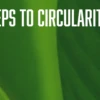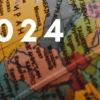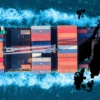With the surge of the e-commerce boom in 2022, the level of returns that our clients experienced went dramatically up, especially after each peak shipping season. Bleckmann needed a more reliable and flexible returns solution to make our clients’ life easier and to continue delivering on promises they make to their customers.
The challenge: having choice when returning goods
The ability to return goods quickly, easily and ideally free of charge has become a key buying decision for consumers when shopping online.
For some retailers, a returns label is included with every purchase. Others require consumers to download a returns label either directly through their website, or via the carrier. This is fine if the consumer can access a printer, however it becomes a challenge for those who can’t.
The solution is to give consumers complete flexibility and choice when returning items: a QR returns label. It can be scanned at a the post office or local drop-off point and the returns label will be generated automatically.
Bleckmann has its own returns platform and we can generate return labels or QR codes for most of the carriers we works with. This solution however did not work for clients in the United Kingdom using Royal Mail for returns. It was clear that that we needed a reliable QR returns solution for our UK-based clients working with Royal Mail.
The right fit solution for our clients and their customers
We approached Royal Mail and were recommended the Intersoft solution. Not only because it is an approved third-party provider of Royal Mail, but also thanks to their proven track-record in working with other 3PLs.
By partnering with Intersoft, we could integrate directly into Intersoft’s API and produce needed return QR codes. During the onboarding process, we incorporated all requirements of Royal Mail for efficient returns, and set up multiple accounts, locations and specifications for our clients using the system.
As a result, we can offer a simple, paperless option for consumers wanting to return goods but have no access to a printer.
We also had to deal with a ‘human error’ factor when for example end-users returning goods contact Bleckmann claiming that they can’t download or print the label. It could be something as simple as a comma or a special character in the data. The team at Bleckmann is able to collate the message or error codes, forward them to the Intersoft’s support team and resolve the issue quickly.
Our clients expect us to find fast responses to their customers’ challenges when dealing with returns and that is precisely what we can offer.
“Last year alone, we generated 6.7 million returns labels. Around 85% of those were created and printed before the package is sent to the consumer; they are then put in the box with the order.”
- Tim De Smet, Bleckmann
“About 70% of printed returned labels are thrown away.”
Key benefits
 |  |  |
| Quickly implemented and easily integrated solution | Simple, paperless returns option | Fast and efficient end-user customer support |
The results: less paper wasted and happy customers
In today’s online retail landscape, it’s vital for brands to have easy return solutions helping them retain their customers. Offering the QR core as one of return options for our UK-based clients working with Royal Mail, makes our services even more attractive for many online retail brands.
It’s good to mention that being able to offer our clients a no-print option is not only beneficial in terms of customer retention and customer experience, it can also save retailers time and money by not printing labels unnecessarily.
Sustainability is directly related to it. Brands are looking for greener solutions and the option for paperless labels supports both their sustainability policies and reputation. While it’s a simple improvement step, all such small staps add up in the end.
Tim de Smet, IT Transport Project Manager at Bleckmann says, “Last year alone, we generated 6.7 million returns labels. Around 85 per cent of those were created and printed before the package is sent to the consumer; they are put in the box with the ordered goods.”
As a result, as many of 70 per cent of returned labels are thrown away. It isn’t just the cost of the printed label that’s being wasted; someone must generate, print and place that label in the package.
“We want to satisfy our clients,” adds Tim. “And they want to satisfy their end-consumers. By offering the option to receive a simple email with the QR code, this becomes beneficial to everyone.”












